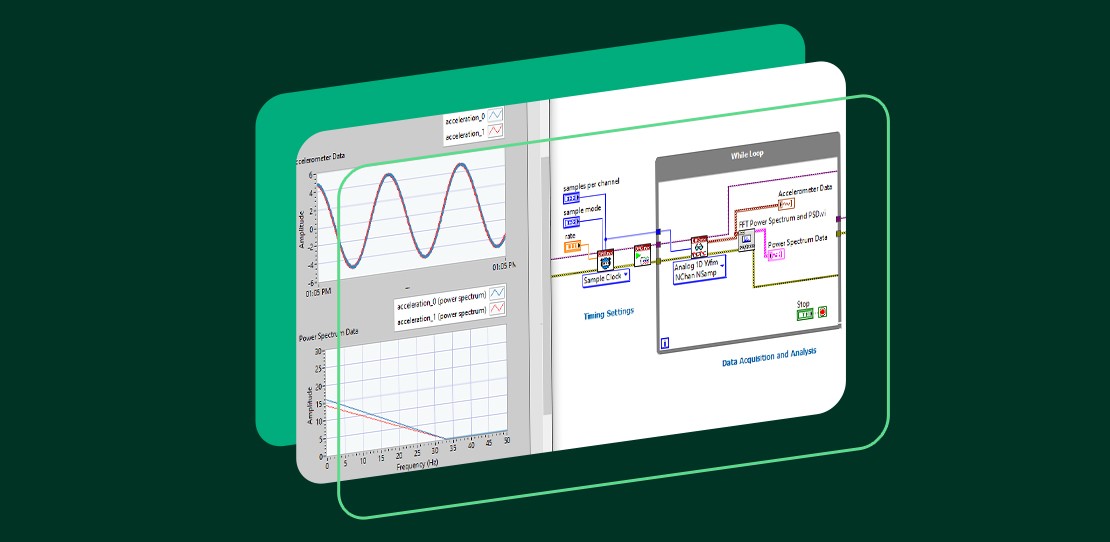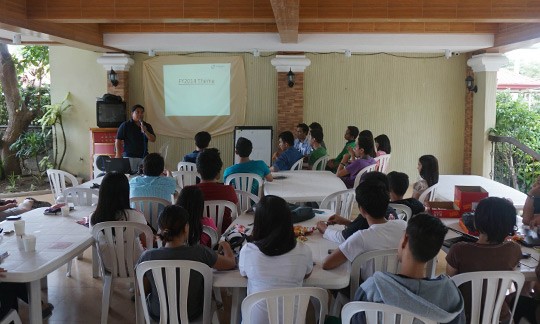
Charting the Course for Test Development with LabVIEW
EXPERT OPINION
LabVIEW | 8 MINUTE READ
LabVIEW remains key in test, promising speed, efficiency, and new features with NI’s investment in core tech, community, and integration.
AUTHOR: Graham Green, Head of Test Software
Why LabVIEW will continue to be the leading development environment for test and how NI plans to support its users
Credit, as a test engineer in 2024, is not given to those who write a lot of code. It belongs to those who provide solutions the fastest. Speed drives everything. McKinsey found products that launch six months late to market have their profits cut by a third. No business can afford this loss. It’s made development speed the primary metric for many engineering groups.
To meet these accelerated deadlines, engineers are redefining their roles by the problems they can solve, rather than the scale of the systems they build. They are choosing tools that reflect this change in mindset, which has seen an explosion of high-level development methodologies in modern software groups.
Synergy Between Modern Development Tools and Engineering Creativity
Let’s step outside of test and measurement for a moment and look at video game development. To succeed, studios must launch innovative, new products quickly with a team of specialist engineers—many of whom don’t have a software engineering background. This statement probably sounds familiar to test leaders as they have a similar remit.
For the gaming industry, Epic’s Unreal Engine has revolutionized how products are developed. It provides a node-based environment that scales from simple to large and complex software applications. The engine has become the industry standard as it makes development faster—much faster—because it abstracts much of the low-level operation away from the developer.
This development paradigm is a mix of configuration tools and dataflow coding that delivers low-level access to individual functions and highly accelerated programming. With many more companies adopting this approach, engineers now expect a familiar experience in every tool across their development workflow. Gaming industry professionals are not offended by these new levels of abstraction but instead embrace them. They allow engineers to focus on the unique or differentiating features of their product without distraction.
The wide adoption of these modern tools makes it unthinkable to start developing a new project without the foundation of a trusted engine. To achieve both speed and quality, the answer in the modern age of development is graphical and node based.
Powering Test and Measurement
The adoption of programs like the Unreal Engine should come as no surprise to test professionals. We have always been ahead of the curve in graphical, node-based design. LabVIEW came first, but you could put MathWorks® Simulink® software, elements of SOLIDWORKS, ladder logic tools, and others into this same category.
LabVIEW is the tool the test industry has relied on for decades. From phones to cars, space rockets to solar panels, and washing machines to pacemakers, people around the world use products that rely on LabVIEW every day. Even with this legacy, LabVIEW’s innate benefits, combined with renewed investment, make the next ten years—not the last—the most exciting for users. In a world where productivity is king, LabVIEW users have and will continue to have a significant advantage over their peers.

Committed to the Future of LabVIEW
It is a time of change and opportunity for NI as well as for LabVIEW. With external investment and a refocus on the fundamentals of test and measurement, not only do we have confidence in the future of LabVIEW, but we also consider it central to our future success.
To ensure LabVIEW users always have confidence in their choice of tool, we are committed to investments in these three areas:
- LabVIEW must always meet your application needs. We know your job gets harder every year as your product evolves in new directions. We will never stop investing in core functionality to meet application needs such as hardware support, analysis IP, sequencing, ecosystem integration, and more.
- LabVIEW must always make your work quicker. We know the time to market your product relies on engineers like you meeting deadlines, and you choose LabVIEW to significantly increase efficiency. We’re committed to investment that accelerates your development, including no-code options, streamlined hardware interaction, AI-supported activities, automated analysis, and more.
- LabVIEW must help you work with others. We know you don’t work alone, so we are investing in technology to ease collaboration challenges. Sharing ideas and IP with your colleagues and community peers benefits everyone. NI supports this with remote interfaces, connected development tools, third-party software compatibility, community programs, and more.
We will never stop investing in LabVIEW’s core functionality to meet application needs such as hardware support, analysis IP, sequencing, ecosystem integration, and more.
We will never stop investing in LabVIEW’s core functionality to meet application needs such as hardware support, analysis IP, sequencing, ecosystem integration, and more.
We will never stop investing in LabVIEW’s core functionality to meet application needs such as hardware support, analysis IP, sequencing, ecosystem integration, and more.
LabVIEW Is at the Heart of an Evolving Test Development Ecosystem
We recognize that true development efficiency lies not in fulfilling a single task, but in delivering success across the wider test development workflow from planning to building, deploying, and managing applications. To serve this broader need, our software strategy focuses on delivering an integrated software suite with LabVIEW at the core that will support your entire test workflow. NI will continue to invest in each tool as well as in ways that make these tools work seamlessly together. We will build new licensing models that provide better access and more value.
This year, we will see significant and impactful product releases in the test development software space. We are encouraged by the growing development community and commit continued support towards online and in-person events such as GDevCon and NI Connect. Most importantly, we can’t wait to see and support the groundbreaking applications that we know our LabVIEW users achieve.
Learn more about the power of graphical programming with LabVIEW and how to increase your efficiency for faster development and intuitive debugging.
MathWorks® and Simulink® are registered trademarks of The MathWorks, Inc.


